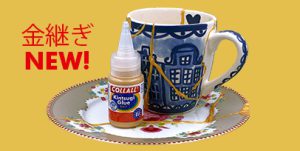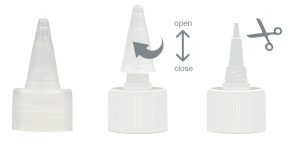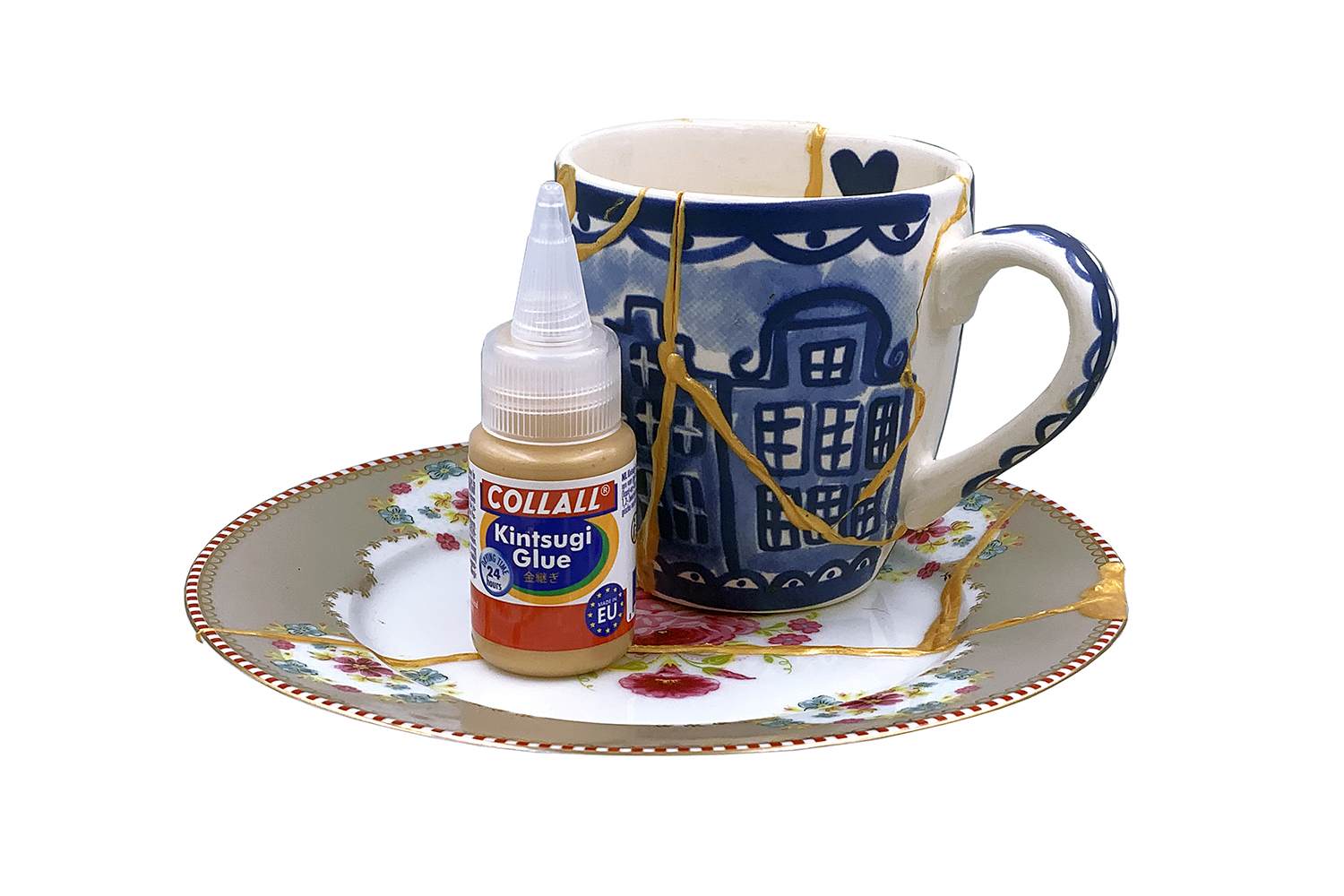Collall Kintsugi Glue
Kintsugi is a Japanese art form where broken objects made of porcelain, earthenware, and ceramics are repaired using this special (ready-to-use) golden adhesive. Instead of concealing the fractures, they are accentuated by the golden lines of this adhesive. This imparts a new, unique appearance to the repaired objects and emphasizes that they remain valuable despite their imperfections.

Specifications
Type of glue: Collall Kintsugi glue is a gold-colored ready-to-use adhesive for repairing porcelain, earthenware, and ceramic items with cracks, shards, or fractures. This highlights the break, small cracks, and other irregularities through the gold-colored lines of Kintsugi glue.

Appearance:
- Thick, gold-colored adhesive
- Fast bonding
- No sagging after drying (3D effect)
Solvent: water
Main ingredient: acrylic
Density: 1,062 g/cm³
Natural ingredients: 42%
Viscosity: 4.000 mPa.s
pH: 7,5
Typical use: –
CE: –
Application:
- The materials to be glued should be dry and free from dust and dirt.
- Apply the adhesive directly from the bottle to the surface to be glued.
- Fully cured after 24 hours.
Allergens: CMIT/MIT and 1,2-benzisothiazol-3(2H)-one. May produce an allergic reaction.
Suitable for: ages 6 and up.
Cleaning:
- Tools can be cleaned with water while the glue is still wet. A synthetic detergent can be added to the water if required.
- Traces of the glue that have dried should be soaked in (warm) water and can still be removed easily.
Make Broken Objects Beautiful Again with Kintsugi!
More Fun Ideas:
-
Porcelain teapots are often cherished items, and Kintsugi can give them a new decorative life after a break.
-
Small ceramic figurines or decorative pieces can be restored with Kintsugi, preserving their charm.
-
Decorative porcelain and earthenware bowls can be repaired and remain usable (not dishwasher-safe).
-
Ceramic flower vases can retain their original beauty as decorative pieces in the home after Kintsugi repair.
-
Tableware—not just plates, but also bowls, cups, saucers, and other dishware—can be mended using Kintsugi.
-
Ceramic jewelry, such as pendants or earrings, can also be repaired with Kintsugi.
The Golden Joinery and Repair
Kintsugi (金継ぎ, “golden joinery”) or Kintsukuroi (“golden repair”) originated in Japan at the end of the 15th century. This art form has been around for more than five centuries! It emerged as an alternative method for repairing valuable porcelain tea bowls instead of simply discarding them. Kintsugi celebrates the beauty of breakage while providing a practical repair technique. Since then, it has played a crucial role in Japanese culture and is appreciated worldwide for its philosophical and aesthetic significance.
Discover this Japanese art form, Kintsugi 金継ぎ (“golden joinery”), where breakage and repair contribute to an object’s beauty. So don’t throw away your broken dishware!



